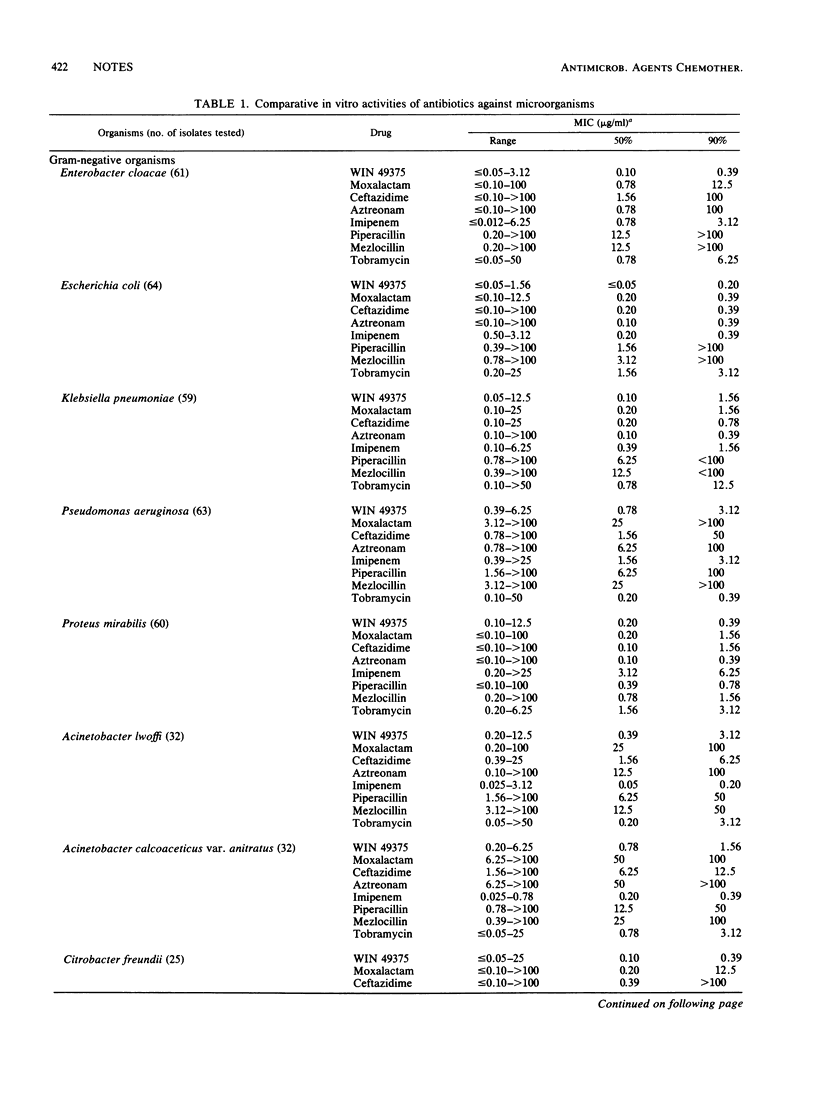Abstract
The activity of WIN 49375 [6-fluoro-1, 4-dihydro-1-(methylamino)-7-(4-methyl-1-piperazinyl)-4-oxo-3- quinolinecarboxylic acid], a new synthetic quinolone, was tested in vitro against 587 clinical isolates. The MICs for 90% of isolates of Escherichia coli, Klebsiella pneumoniae, and Enterobacter cloacae were 0.20, 1.56, and 0.39 microgram/ml, respectively. The MICs for 90% of isolates of Pseudomonas aeruginosa and Serratia marcescens were both 3.12 micrograms/ml. WIN 49375 was minimally active against gram-positive cocci. Its in vitro activity suggests that it may be useful for the treatment of gram-negative bacillary infections.
Full text
PDF


Selected References
These references are in PubMed. This may not be the complete list of references from this article.
- Chin N. X., Neu H. C. In vitro activity of enoxacin, a quinolone carboxylic acid, compared with those of norfloxacin, new beta-lactams, aminoglycosides, and trimethoprim. Antimicrob Agents Chemother. 1983 Nov;24(5):754–763. doi: 10.1128/aac.24.5.754. [DOI] [PMC free article] [PubMed] [Google Scholar]
- Fass R. J. In vitro activity of ciprofloxacin (Bay o 9867). Antimicrob Agents Chemother. 1983 Oct;24(4):568–574. doi: 10.1128/aac.24.4.568. [DOI] [PMC free article] [PubMed] [Google Scholar]
- Khan M. Y., Gruninger R. P., Nelson S. M., Klicker R. E. Comparative in vitro activity of norfloxacin (MK-0366) and ten other oral antimicrobial agents against urinary bacterial isolates. Antimicrob Agents Chemother. 1982 May;21(5):848–851. doi: 10.1128/aac.21.5.848. [DOI] [PMC free article] [PubMed] [Google Scholar]
- Newsom S. W., Matthews J., Amphlett M., Warren R. E. Norfloxacin and the antibacterial gamma pyridone beta carboxylic acids. J Antimicrob Chemother. 1982 Jul;10(1):25–30. doi: 10.1093/jac/10.1.25. [DOI] [PubMed] [Google Scholar]


